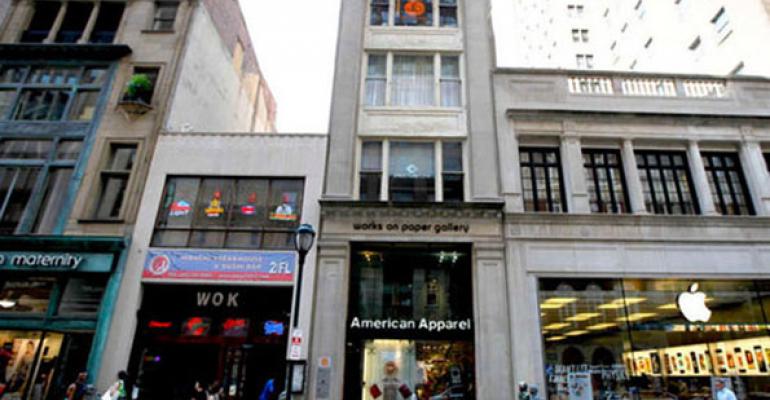Of the two thoroughfares that make up PH Retail’s June acquisition in Philadelphia’s Center City, Walnut Street is decidedly the most luxurious. Rents range from $150 to $225 per sq. ft., best suited to tenants like Tiffany & Co., Armani Exchange, Barney’s Co-Op and Lululemon Athletica.
Just one block to the north, on Chestnut Street, are retailers whose spaces take in rents that are 50 percent less. Stores that range in size from 10,000 sq. ft. to 40,000 sq. ft. in size, including Nordstrom Rack and Old Navy. Owning both properties gives PH Retail, a Philadelphia-based company that leases and develops retail assets, access to a large cross-section of custumers in one city. In some cases, the company can offer retailers access to high-end customers at a fraction of the property costs.
“The strategy might work for certain retailers,” according to Randolph Hope, a co-founding member and managing director of PH Retail Partners.
The flexibility to reach two types of consumers in such a small area is just one of the many advantages of leasing and owning high street retail space. High street retail continues to enjoy some of the lowest cap rates in the commercial real estate industry. At the end of the first quarter of 2016, retail cap rates on properties on urban and high streets were slightly over 4.5 percent, about 50 basis points lower than retail overall, according to relative cap rate data from Real Capital Analytics (RCA), a New York City-based research firm.
Philadelphia is not the only locus of recent victories in urban retail development plans. In Chicago, for instance, Tucker Development paid a reported $52 million for an entire block in the Fulton Market district, which was first reported by Crain’s Chicago Business. The property, with 102,512 sq. ft. of space, belonged to the family that owns Quality Food Products, a food wholesaler.
Whenever cities have tried to compete with outer suburbs to attract businesses, cultural institutions and public entities, retail has been a critical part of the winning formula. Now, cities like Philadelphia are likely to offer as much new development as suburban communities. All industry developments point to sustaining that trend.
Philadelphia, in particular, is still benefitting from the major transformation that began 20 years ago. The area where PH Retail just bought properties, Walnut and Chestnut, did not have much in terms of restaurants, just a Houlihan’s and a bar. Not much else existed to support a defined and desirable neighborhood.
“A majority of real estate is still privately held, and by legacy partnerships,” Randolph said. “Until recently there had not been the big push to invest and renovate buildings, until investors showed up.”
Those historic neighborhoods and grand thoroughfares might not have gotten the same effort from local and private ownership as they did from outside investors. The new attention has helped remind legacy owners of the possibilities underneath all of the smoke and grime.
Mall REIT PREIT, for example, bought two properties in downtown Philadelphia in 2014 and made improvements to them, according to Randolph. The firm was able to sell the assets earlier this summer for $20 million at a blended cap rate of 3.9 percent.

